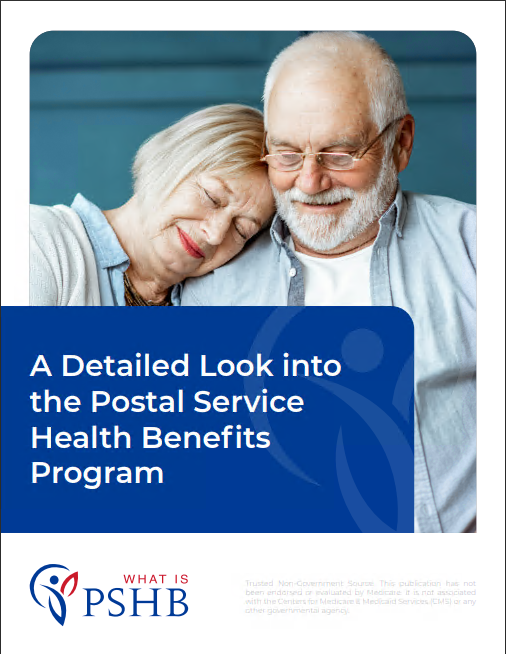Key Takeaways:
- The Postal Service Health Benefits (PSHB) program significantly alters the health insurance landscape for USPS retirees, impacting their financial planning and retirement benefits.
- Understanding the PSHB transition’s implications can help USPS retirees make informed decisions about their healthcare coverage and costs.
What PSHB Means for USPS Retirees: Breaking Down the Financial Impacts and More
The introduction of the Postal Service Health Benefits (PSHB) program marks a significant shift for retirees of the United States Postal Service (USPS). With changes in healthcare plans and the advent of new regulations, it’s crucial for USPS retirees to grasp what PSHB entails and how it will affect their financial well-being. The transition, set to take place in January 2025, is part of broader efforts to address the financial sustainability of the USPS. As retirees adapt to these changes, understanding the full scope of PSHB and its implications on retirement finances becomes essential.
Understanding the PSHB Program
The PSHB program, established under the Postal Service Reform Act of 2022, represents a pivotal transformation in how health benefits are administered to USPS employees and retirees. Before the implementation of PSHB, USPS retirees participated in the Federal Employees Health Benefits (FEHB) program, a system providing health insurance options to federal employees and retirees. However, with the inception of PSHB, a new, USPS-specific program will replace the FEHB coverage for postal retirees.
The key change under the PSHB program is the mandate for most USPS retirees to enroll in Medicare Parts A and B upon reaching eligibility. This shift is designed to reduce the financial burden on the USPS by integrating Medicare benefits more fully into the health coverage for retirees. As a result, retirees will now have a health plan specifically tailored to USPS employees and retirees, which is anticipated to better address their unique needs.
Financial Impacts of the PSHB Transition
Increased Medicare Enrollment
One of the most significant financial impacts of the PSHB program is the requirement for Medicare enrollment. USPS retirees who turn 65 after January 1, 2025, will be required to enroll in Medicare Parts A and B to maintain their PSHB coverage. This enrollment could lead to higher out-of-pocket expenses for retirees, especially for those who previously opted out of Medicare Part B due to its associated premium costs.
While Medicare Part A, which covers hospital services, is generally premium-free, Part B—covering outpatient care, physician services, and preventive services—requires a monthly premium. The additional expense of Medicare Part B premiums could be a financial strain for some retirees, particularly those on fixed incomes. However, the integration of Medicare with PSHB may result in lower overall costs by reducing out-of-pocket expenses for medical services.
Changes in Premium Contributions
Under the PSHB program, USPS retirees may see changes in their premium contributions compared to the FEHB program. The specifics of premium costs under PSHB are yet to be fully detailed, but it is expected that premiums could be more closely aligned with Medicare integration, potentially leading to different financial obligations for retirees.
Historically, FEHB premiums have been a significant expense for retirees, often taking up a large portion of their retirement income. The shift to PSHB might offer some financial relief by lowering premium costs due to Medicare’s role in covering major health expenses. However, any savings in premiums will need to be weighed against the mandatory Medicare Part B premium, making it crucial for retirees to carefully analyze their healthcare costs.
Impact on Spousal and Dependent Coverage
Another financial aspect to consider is how the PSHB program will impact coverage for spouses and dependents of USPS retirees. Under FEHB, retirees had the option to cover their spouses and dependents under their health plan. The transition to PSHB might bring changes to this aspect of coverage, particularly concerning how Medicare integration affects dependents who are not eligible for Medicare.
Spouses and dependents who are not Medicare-eligible may continue to receive coverage under the PSHB program, but the terms and costs of this coverage are likely to differ from those under the FEHB. Retirees will need to evaluate how these changes impact their overall healthcare expenses and plan accordingly to ensure that their families remain adequately covered.
Navigating the Transition: Steps for USPS Retirees
Evaluate Current and Future Healthcare Needs
As USPS retirees prepare for the transition to PSHB, it’s essential to assess both current and future healthcare needs. Understanding what services and medications are essential can help in selecting the most appropriate plan under the new PSHB system. Retirees should consider how the integration of Medicare will impact their coverage for routine care, specialist visits, and prescription medications.
Additionally, retirees should review their healthcare usage patterns to determine if enrolling in Medicare Part B is financially beneficial. Given that some retirees may have opted out of Part B in the past due to cost considerations, re-evaluating this decision in the context of the new PSHB requirements is crucial.
Review and Compare Available PSHB Plans
Before the full implementation of PSHB in 2025, USPS retirees should take the time to review and compare the available health plans under the new program. This comparison will be essential in understanding the differences in coverage options, premium costs, and out-of-pocket expenses compared to their current FEHB plans.
Retirees can access resources provided by the USPS and Medicare to better understand the specifics of each PSHB plan. By comparing these options, retirees can make an informed decision that aligns with their healthcare needs and financial situation.
Seek Guidance from Licensed Insurance Agents
Given the complexity of the PSHB transition, USPS retirees are encouraged to seek advice from licensed insurance agents who specialize in Medicare and retirement planning. These professionals can provide personalized guidance on how to navigate the transition, including helping retirees understand the implications of Medicare enrollment, the selection of appropriate PSHB plans, and strategies to manage healthcare costs effectively.
Engaging with a licensed insurance agent can also help retirees identify potential cost-saving opportunities and ensure that they are making the best possible decisions for their health coverage during retirement.
Future Considerations for USPS Retirees
Adapting to Policy Changes
The implementation of the PSHB program underscores the importance of staying informed about policy changes that affect retirement benefits. As the USPS and federal government continue to address financial sustainability, further changes to retiree benefits could occur. Retirees must remain vigilant and adaptable to these changes, ensuring that they regularly review their health coverage and financial plans.
Staying informed about legislative developments and upcoming changes to retiree benefits is crucial for making proactive decisions that protect one’s financial security in retirement.
Planning for Long-Term Healthcare Costs
Long-term planning for healthcare costs is more critical than ever for USPS retirees. With the transition to PSHB, retirees should consider how their healthcare needs may evolve over time and plan accordingly. This planning should include setting aside funds to cover out-of-pocket expenses, particularly as Medicare becomes a more significant component of their healthcare coverage.
Retirees should also consider the potential need for long-term care insurance or other supplemental insurance options that can provide additional financial protection as they age. By planning for the long term, retirees can better manage the financial impacts of healthcare costs and maintain their quality of life in retirement.
Maximizing Retirement Benefits
Maximizing retirement benefits under the new PSHB program requires a strategic approach. Retirees should take advantage of any available resources, including informational seminars, online tools, and consultations with financial planners, to ensure they are fully informed about their options. Understanding the interplay between PSHB, Medicare, and other retirement benefits will be key to optimizing financial outcomes.
By taking a proactive approach to managing their health benefits, USPS retirees can maximize the value of their retirement package and secure their financial future.
Adapting to PSHB: A Necessary Adjustment for USPS Retirees
The transition to the Postal Service Health Benefits program represents a major shift for USPS retirees, with significant financial implications. As retirees navigate this new landscape, understanding the changes and preparing accordingly will be crucial to maintaining financial stability and securing appropriate healthcare coverage. By staying informed, seeking expert guidance, and planning for the long term, USPS retirees can adapt to the PSHB program and continue to enjoy a financially secure retirement.
Contact Information:
Email: [email protected]
Phone: 3145551234






